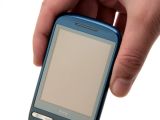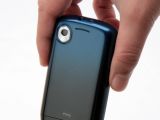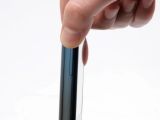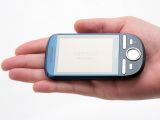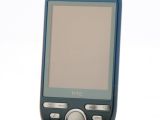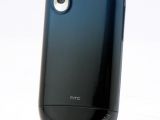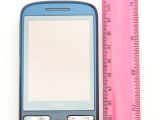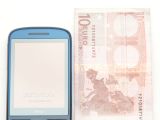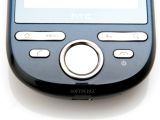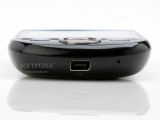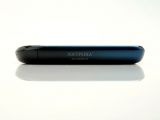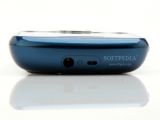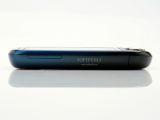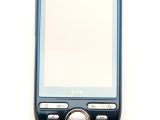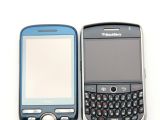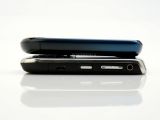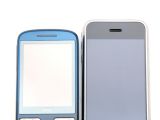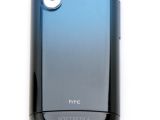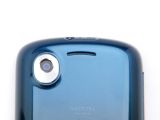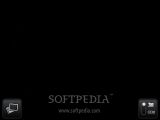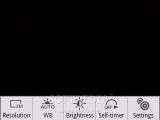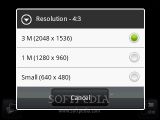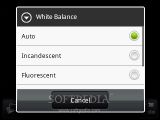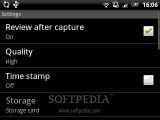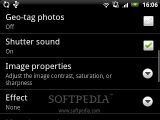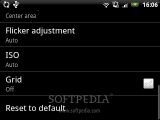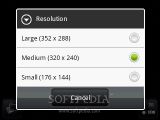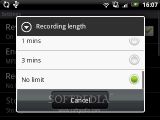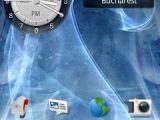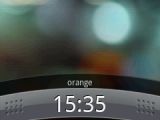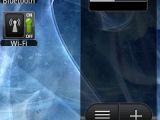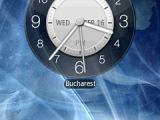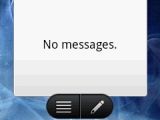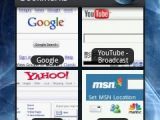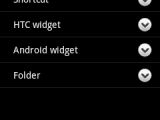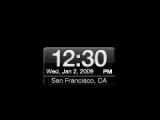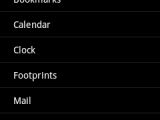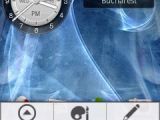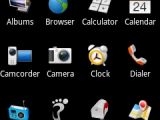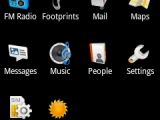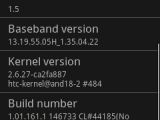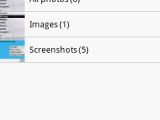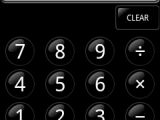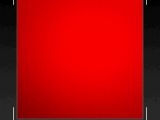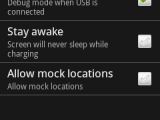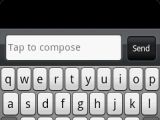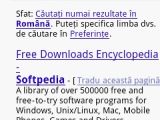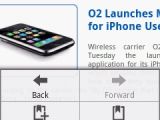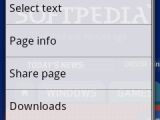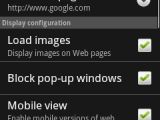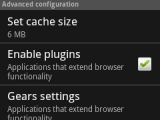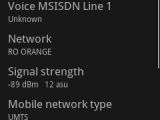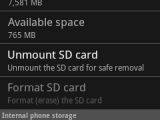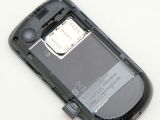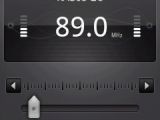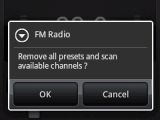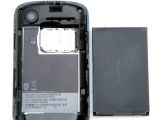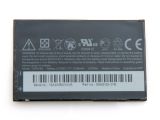The explosion of Android devices manufactured by almost every well-known brand has been impressive lately. For the moment, HTC holds the supremacy over this market, as it already launched a few successful smartphones and also has its own UI for Android devices.
If the Taiwanese company only launched high-end Android smartphones, this time those that wanted to buy one of these phones and didn't have the required budget will be happy to find that HTC decided to cover this part of the mid-budget smartphone market. The new HTC mid-budget device was first rumored as the HTC Click, but was officially announced as HTC Tattoo. The name comes from the fact that owners will be able to change the back cover with some bearing various sketches.
HTC Tattoo was officially announced in September 2009 and will most likely hit the market one month later, in October 2009. The device is available in four different colors: Brown, White, Graphite and Black. HTC hasn't disclosed any information regarding its price, but stated that its target would be the mid-budget market, which means that we should expect much lower prices than its high-end brothers.
Design
There's no doubt about it, the design is one of the strong points of this small smartphone. Moreover, the possibility that HTC offers to Tattoo's users to change the back cover will give them more freedom in choosing how they want their smartphone to look like. The compound used at manufacturing is a glossy plastic with rich finishes that makes the phone look exquisite and stylish. Most likely, the material will turn matte after a while, but you can easily change the cover and have a new device again. HTC Tattoo is a medium to small-sized device, thus it includes a smaller, 2.8-inch display, but this isn't too much of a drawback. Under the touchscreen, HTC placed some external keys that already became standard for Android smartphones: Home, Menu, Back, Search, Accept and Reject calls. Unfortunately, the phone doesn't feature the usual trackball, instead you have a big, four-way navigation with the Enter button.
The long, slim volume key has been placed on the right side of the smartphone. On top, there's a 3.5mm jack port, while on the bottom side, you will notice the usual miniUSB port. The 3-megapixel camera on the back of the phone has been surrounded by a small, metallic plate for protection reasons. There's no flash or mirror for portraits, instead there's a small loudspeaker to the right of the module camera. The microSD card slot has been placed under the back cover, on the lower left part of the smartphone. Even though it's hot-swappable, I find it a little bit annoying to be forced to pull out the back hood every time I want to insert a memory card. The phone has a block form factor, it is compact and features rounded edges, which makes it feel great in hand. The exact measures of the device are 106 x 55.2 x 14 mm, while the weight is of 113g (including battery). Thanks to its nice design, HTC Tattoo will surely be a blast on the mass market, especially if its price will be mid-ranged.Display and Camera
HTC Tattoo features a 2.8-inch TFT capacitive resistive touchscreen that supports 65K colors and a 240x320-pixel resolution. Unfortunately, the display does not rise up to Hero's display level of performance. Understandable for a mid-budget phone that wants to sell for a cheap price. The touchscreen lacks the muti-touch support and the accelerometer function. Visibility under the strong sunlight is medium, it depends on what angle you keep it in your hand, but, overall, you can use it outdoors with little problems. The image quality is very good, but, again, it is inferior to that on Hero's display. When it comes to the sensitivity of the device, again Hero's display seems much better, but this one does its job too. One more thing that I have noticed is the haptic feedback feature, which is also present in this model.
Menu and Software
HTC Tattoo runs the Android operating system, including Cupcake 1.5. To my surprise and pleasure, the acclaimed Sense UI has also been embedded into this mass-market device. Unfortunately, my test unit had an earlier version of the operating system and missed lots of critical applications and probably functions too. For example, the official press release states that HTC Tattoo will feature the Android Market application, while my unit doesn't have it. I'm also missing out on any document-reading applications, a PDF reader included. I also miss a File manager, as well as Gmail services (except Google Maps). Other applications that were present in earlier Android smartphones are included: Album, Browser, Calculator, Calendar, Clock, FM Radio, Footprints, Mail, Maps, Messages, Music, Contacts, Settings and Weather.
Users will be able to take advantage of the same number of Homescreens – seven. These can be populated with HTC or Android widgets, but also with shortcuts and folders. Regarding the latter, the device still doesn't accept the folder-in-folder function. As seen in the screenshots, you can add Wi-Fi, Bluetooth, favorite contacts, music player, camera, market, Google Maps and much more directly on any of the seven Homescreens. The transition between them is fast and smooth, but still does not quite rise up to Hero's level. The standard Homescreen includes the weather widget, which updates at regular intervals if you have a data connection available. Under the weather widget (which also includes the clock), you will notice four shortcuts: People, Messages, Browser and Camera. There's even a Homescreen that includes previews of some well-known web pages: Google, eBay, Facebook, MySpace, BBC, CNN, Wikipedia and Amazon. Holding the Home button pressed for a few seconds will bring up a task manager, which will display the last six applications that you opened. These remain active in the smartphone's memory, so if you open the seventh, the first application you have previously accessed will automatically be closed. Unfortunately, I'm missing the YouTube video player, which will most likely be included in the final version of the device.Communication
Even though it's a mid-ranged smartphone, HTC Tattoo includes the latest communication technologies: GPRS and EDGE class 10, HSDPA 7.2 Mbps and HSUPA 384 Kbps, Wi-Fi 802.11 b/g, Bluetooth 2.0 with A2DP, miniUSB 2.0.
The integrated browser WebKit cannot be closed, but it seems upgraded, compared with the previous two Android devices: Magic and G1. My test unit misses the multi-touch-gesture function and I don't believe the final product will get it. There's a new function that will help users zoom in/out easier. Close to the base of the webpage, you will notice a thin line, like a grade scale, which can be moved from left to right and vice-versa. This way, you will be able to zoom in/out to exactly the level of zooming you want. Of course double-clicking also works, but only offers one level of zooming. The browsing experience is good, especially for a mid-ranged device. My unit didn't have Flash support, but it would be nice if the final version provided this feature. HTC Tattoo is compatible with all email clients and protocols (POP3, IMAP) and can be synchronized with Microsoft Exchange. The rest of the email accounts can be set to be checked at various intervals (five, ten, 30 minutes). The device is also compatible with SMS, EMS, and MMS text features. The interface is pretty straightforward and user-friendly. The Wi-Fi 802.11 b/g connectivity is another option that will surely reduce costs for those that are heavily using Internet browsing or data transfers. The built-in GPS receiver and digital compass work together with the Google Maps, so that you won't get lost. Unfortunately, there's still no software behind the integrated GPS receiver, so vocal guiding is out of the question. HTC Tattoo is a quad-band GSM (850 / 900 / 1800 / 1900) handset that is also compatible with HSDPA 900/2100 networks. The in-call sound quality is above average, while the GSM signal is also good, but avoid keeping the gadget set on the 3G band, as the reception is not that strong.Processor and Memory
HTC Tattoo is powered by a single Qualcomm MSM 7225 processor, running at speeds of up to 528 Mhz. Overall, I haven't experienced any lock-downs, crashes, or lags. Moreover, the phone acts very fast to any command, even when multiple applications are running in the background. My test unit behaved meritoriously, so the final product should be at least at its level.
The smartphone embeds a 256 MB RAM and a 512 MB ROM memory. The storage space can be expanded up to 16GB through the hot-swappable microSD card slot that has been placed under the back cover, on the left lower corner of the phone.Multimedia
HTC Tattoo features an MP3 player that can also be used as a widget from the Homescreen. Unfortunately, there are no visible upgrades since the last Android device. This may be the only downside of the phone. Even though the MP3 player looks nice, you are still unable to use any kind of equalizers or visualization effects. The only improvement that can be easily noticed is the added 3.5mm jack port on the top side of the phone. Thus, you will now be able to add your own headphone for a better music-playback experience.
The music player supports audio files in MP3, AAC, AAC+, WMA, MPEG4, WAV, MIDI, Real Audio and Ogg formats. The music sound is somewhat average in quality, and average in intensity. The video player will open itself every time you click on a video file. There's also an FM Radio that can be run in the background or listened to in the loudspeaker. The reception is good, as well as the sound.As a mid-budget device, HTC Tattoo does its job pretty good, even if it seems a little bit undergeared, compared with well-known brands like Nokia or Sony Ericsson, which excel in this department.
Battery
HTC Tattoo includes a slim 1100 mAh Li-Ion battery, which has an officially stated life expectancy of 340 hours in standby (520 hours for 3G) and six hours and 30 minutes in talk-time mode (five hours and 40 minutes for 3G). Our test unit made it for about three days, but it was mildly used. During the tests, I noticed that you could prolong the battery life if you disabled the live connection for all widgets that needed to be updated regularly, and the emails. In fact, you can almost double the lifetime of the battery by doing these changes, which means that you will only need to charge it twice per week at the most. I was quite content with the battery autonomy, which will probably be better in the final version.
Impressions
HTC Tattoo has all the ingredients to become a well-sold smartphone, if the Taiwanese manufacturer will set the right price for it. I find the device as one of the best mid-budget phones, as it has a very nice design and excellent features. All that remains is a cheap price, so that a high percentage of smartphone users get to at least try it.
The Good
The Bad
Sales Package
HTC Tattoo handset; Stereo headset; 1110 mAh Li-Ion Battery; Charger; USB Cable.
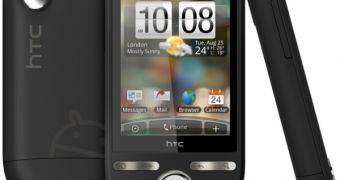
 14 DAY TRIAL //
14 DAY TRIAL // 
